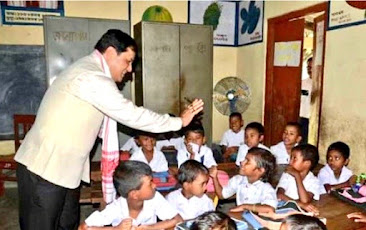A nation cannot prosper unless the people
are not educated. Education is a tool which if used with effectiveness, can
solve many hostile problems of a nation and can empower the masses. Same works
for India if it truly aspires to bring robust change for the progress of the
nation then it has to offer quality education to all. However, this education
in India for long has mostly remained confined to rote learning leaving narrow
scope for innovations. The new education policy, which is much in the
discussion, has outlined and recommended robust changes in the prevailing
education system, which might open avenues for innovations.
The
most notable change which deserves to be welcomed is that this education policy
document proposes that the segregation
of streams after 10th will be repealed at the school level. The
students will have the liberty to choose subjects across all the streamlines.
This will enable students to gain knowledge in multiple disciplines and will
transform young minds into multi-taskers which is the need of the hour. After
all, a student who loves science may also love history, but the current system
prevents them from choosing both, but if this system is implemented, they can
study both.
Similarly, NCC, sports, music under the
current system are listed under extra-curricular activities beyond the ambit of
formal education. Even, scoring on these areas were considered irrelevant and
hardly any college would count these scores while granting admission. This gave
birth to the popular traditional argument from Indian parents such as
"scope Nahi hai”, meaning there is no scope in these areas. Imagine, a
field of education which gave us Sachin Tendulkar, famous singers and many
others was viewed as something having no scope just because these were
extra-curricular activities having no connect to formal education.
However, now, this new education policy has
dissolved the disconnect between mainstream education and extra-curricular
activities. This means that now scoring in physical education, music, painting,
sports will be no less valuable than what you score in math's, or science. New
education policy also intends to redefine the meaning of education among
society which was centred on gaining knowledge in traditional disciplines such
as history or mathematics. Now every activity, including sports, music, debate,
and painting, will be seen as an exercise of getting educated along with
traditional subjects.
I hope you remember your first day of
school. Very often, many of us cry because, under such small age, we wanted to
play, but our schools had always focused on making us learn from texts and then
give the exams from the very first day. This new education policy has
recommended changing this scenario by introducing school education for
children's from 3 years of age. For the first
five years in school, which is the foundation stage, the children’s will
learn to play, paint and explore their interests. There will be no exams for
them till class 2. This step will make learning
fun for children’s and will encourage students to attend schools without any
stress. Various reports suggest that due to the lack of skills, many young people
are unqualified in the job market. Keeping this in mind, the new education
policy proposes to introduce
coding from class 6, which will help students to learn about making
software and websites from their initial stage. This will prove beneficial to
acquire jobs in the IT sector and will also reduce the stress in the IT sector
to train its employees in accordance with the job market. In between class
9-12, the students will also have the option
to study several foreign languages which will assist students in the
globalization world.
From the prospect of higher education also, this new policy document has placed a constructive and welcome pathway before India. First, the graduation will be of total 4 years, but it has been divided into certain levels.
After completing one year, the student will
get a certificate of graduation. Similarly, after completing two years, the
student will get a graduate diploma certificate, and after three 3 years, it
will become a full graduate degree. It means that even if someone completes one
or two years, it will retain some value in the market. Apart from this, it also
gives the multi-option entry and exit option, which means that if someone after
completing one or two years of total 4 years graduation leaves but again if
they wish to continue, they may continue from where they had left earlier.
There is no need to start from the beginning, and this step is one of the most
holistic approaches. The annual
dropout rate in colleges of India is high, and this multi entry-exit system
will drastically reduce this. This new policy has also tried to minimize the
barriers of language while taking education. It has introduced an option for
students to gain knowledge in their own regional
language till 5th standard for better understanding.
There was also an issue about government
spending less on education from GDP and in the year 1964, Kothari
commission had recommended a 6% allocation of GDP for education, but it was
never implemented. This new education policy has allowed spending 6% of GDP
from education from now 3% of GDP, which means the spending on education will
be doubled. This will definitely help India to overhaul its educational
infrastructures.
If this new education policy is implemented
effectively, the dreams of young India will get new wings to fly high.








1 Comments
Excellent
ReplyDelete